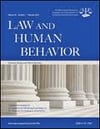
People may use moral typecasting in their judgment of offenders and to make sentencing determinations. This is the bottom line of a recently published article in Law and Human Behavior. Below is a summary of the research and findings as well as a translation of this research into practice.

Featured Article | Law and Human Behavior | 2016, Vol. 40, No. 6, 697-706
Moral Typecasting Underlies Punitive Responses to Crime
Authors
Andrea L. Miller University of Illinois at Urbana-Champaign
Eugene Borgida University of Minnesota
Abstract
We examine the role of moral typecasting in lay individuals’ punitive responses to crime. Individuals perceive criminal offenders and victims in ways that are biased by their perceptions of the actors’ moral roles in prior simulated criminal incidents. We find that this psychological process of moral typecasting has important implications for punitive responses to criminal offenders, and these findings make 2 major contributions to the literature. First, we show that moral agency is distinct from moral deservingness, which is 1 of the dominant explanations for punitive behavior in social psychology. Second, the role of moral typecasting in punitive responses means that these responses can occur regardless of the valence of moral character. We argue that theories of lay punitive responding that do not take moral typecasting processes into account are incomplete.
Keywords
moral typecasting, punitive responses, crime, moral desert, moral character
Summary of the Research
“As more Americans come into contact with the criminal justice system, it becomes increasingly important to examine the psychological underpinnings of punitive responses to criminal offenders. Lay individuals’ punitive responses to crime are important in that they may play a role in understanding public support for criminal justice policies, collateral consequences of criminal records, decisions to report crimes, victim-blaming, and other everyday interpersonal interactions with those who have committed or been victimized by crimes. Thus, lay punitive attitudes both constitute a matter of fundamental social psychological interest and have implications for criminal justice law and policy” (p. 697).
“[Prior social psychology] work emphasizes the distinction between retributive motives (i.e., a desire to see the offender punished in proportion to the offender’s deservingness to be punished, or “moral desert”) and utilitarian motives (i.e., a desire to see the offender punished to the extent that this will benefit society by deterring crime) in individuals’ punitive decision-making. A consistent finding that emerges from this body of research is that while individuals sometimes claim to rely on utilitarian motives when making punishment decisions about others, their actual decision-making patterns correspond to retributive concerns, not utilitarian concerns. This work is valuable because it makes clear that although legal and punishment theorists often espouse utilitarian concerns as a legitimate basis for punishment, concerns about moral desert tend to override utilitarian considerations when lay individuals make punitive decisions in their daily lives. What this approach doesn’t consider is the possibility that moral considerations may not be wholly comprised of deservingness to be punished, but may also include attributions of moral character. In contrast, the studies presented here use moral typecasting theory to show that lay punitive responses to crime involve a character attribution process that, while concerned with morality rather than utilitarianism, is distinct from perceptions of moral desert” (p. 698).
“Moral typecasting theory argues that in response to a moral event, individuals make character attributions about the actors, perceiving them as having high moral agency (having control, responsibility, or blame in a moral situation) or high moral patiency (having the ability to experience pleasure or pain. Although moral agency and moral patiency are two distinct characteristics (as opposed to the opposite ends of one
bipolar characteristic), they tend to correlate negatively. Perceptions of moral agency and patiency are dispositional character labels that persist across situations, even when the target’s objective behavior changes. Moral typecasting, in sum, is the process of perceiving an actor in a moral dyad as having high moral agency or patiency and then continuing to perceive the target in terms of that role, even when objective circumstances do not justify this perception” (p. 698).
The authors conducted several experiments in order to examine the factors that affect perceptions of morality or moral typecasting and the relationship of moral typecasting to the punitiveness of the participant. The participants for the first two studies were drawn from an undergraduate sample. The remaining participants were recruited through Amazon Mechanical Turk. “The procedure was largely the same for the first three experiments. First, as our manipulation, we presented a vignette describing two hypothetical targets. The purpose of the first vignette was to establish an initial impression of the two targets in terms of their moral roles. One target was unambiguously a criminal offender and one target was unambiguously a victim. After the first vignette, we measured (as a manipulation check) participants’ perceptions of each target’s moral agency and moral patiency. In a second vignette, the same two targets were presented as engaging in the exact same behavior together (either committing a crime together or being victimized together); this was the primary stimulus for the experiment. We then measured perceptions of moral agency and moral patiency again, this time as the experimental dependent variable. By measuring perceptions of moral agency and patiency in response to these second scenarios, we tested whether participants’ perceptions of the targets were biased by the dispositional moral labels that they previously assigned to the targets (i.e., whether participants had morally typecast the targets after reading the first scenario). Finally, we measured punitive outcomes” (p. 699).
In the first study, results showed that “targets who previously committed a crime [were] perceived as having higher moral agency and lower moral patiency than targets who were previously victimized by a crime, even when their present actions were identical…even when given information about the targets that indicated that they were equally innocent of a crime and experiencing the same level of victimization, participants’ perceptions of [Target A and Target B] were colored by their original perceptions of the targets as high in moral agency and patiency, respectively. This result demonstrates that the process of moral typecasting influences individuals’ perceptions of the moral character of targets, even to the extent that these perceptions differ from objective reality.” (p. 700). The authors also found that the perceptions of moral agency predicted sentencing recommendations. In a follow-up study, the authors replicated these findings with a different type of crime. “The results were consistent across these experiments and had consistent consequences for sentencing outcomes, even though we used different types of crimes. Furthermore, the moral typecasting process occurred whether the targets were equally guilty of a crime or equally innocent” (p. 702).
“In Study 2, we tested the extent to which the results of Studies 1a and 1b were robust to changes in the valence of moral agency. Whereas the offenders in the previous experiments committed crimes that harmed others, the offender in this study committed a crime to help another. This allowed us to directly test the proposition that moral agency is distinct from moral desert” (p. 702). The results indicated that, even though the two targets committed a crime together in the vignette, participants viewed the former offender as being more responsible for the current crime than the target who had not committed a prior crime. Participants also recommended a more severe sentence for the prior offender. This finding was later replicated in a study using a multi-item measure of moral agency and Mechanical Turk participants and a follow-up study using a different criminal offense.
Finally, the authors conducted a study to examine whether there may be alternative explanations for the prior findings. In this final study, they manipulated the morality of the target’s actions and the illegality (versus immorality) of their actions. “We predicted that perceptions of moral agency would be independent of the target’s moral goodness or badness. As discussed above, previous psychological research on moral character would predict the opposite result—namely, that judgments of moral character would be grounded in the target’s perceived goodness or badness. The results of an independent samples t test supported our prediction and failed to support this alternative account. Participants assigned to the moral condition did not perceive Paul’s moral agency any differently from participants assigned to the immoral condition. This finding provides further support for the proposition that moral agency is distinct from moral desert and bad moral character” (p. 704).
Translating Research into Practice
“[W]e have shown that perceptions of moral agency play a significant role in individuals’ punitive responses to criminal offenders. This finding is particularly important because existing work on punitive responses to crime characterizes these responses as consisting of either retribution (a focus on moral desert) or utilitarian motives (a focus on the benefits of punishment to society). Our findings are largely compatible with these studies in that we show that moral considerations, as opposed to utilitarian considerations, play an important role in judgments about individual criminal offenders. Our studies suggest, however, that individuals’ moral responses to crime might not be fully comprised of retribution based on targets’ deservingness to be punished. These moral responses might instead take the form of a dispositional attribution process that includes considerations of moral desert but is not wholly defined by them” (p. 704).
“Second, our findings suggest that moral agency is not simply tapping individuals’ deservingness to be punished or bad moral character, but is a distinct element of person perception with its own independent effects. Our findings are somewhat compatible with emerging research that emphasizes the role of character attributions in the assignment of blame. Our findings support the notion that dispositional character attributions are an important element of punitive decision-making. However, our findings diverge in that they suggest that punitive outcomes are not primarily driven by valenced perceptions of character, but may instead be driven by perceptions of moral agency and patiency, which are orthogonal to moral goodness and badness” (p. 705).
Other Interesting Tidbits for Researchers and Clinicians
“[I]t seems that the process of moral typecasting is distinct from other social-psychological approaches to the study of punitiveness. Across two studies, we found that the tendency to perceive targets as having moral agency predicted punitive outcomes above and beyond the effects of the other social-psychological variables that we measured: system justification, social dominance orientation, symbolic racism, punitive attitudes, causal attributions for crime, and political conservatism. The moral typecasting
framework adds new and valuable insight to our understanding of punitive decision-making. Finally, the process of moral typecasting was robust to changes in the crime scenarios and in the measurement of moral agency and patiency. A multi-item measure of moral agency functions well and did not seem to affect the results of the research relative to single-item measures” (p. 705).
“[F]uture research should examine the extent to which the role of moral typecasting in lay punitive responses to crime also applies in professional criminal justice contexts. It will be important to examine whether expertise and structural and institutional constraints affect the roles of moral typecasting in the punitive responses of police officers, judges, prosecutors, and jurors. In the meantime, however, it is clear from the studies reported here that moral typecasting plays a role in laypeople’s punitive responses to crime. These results call for the social-psychological study of punitiveness to expand beyond the examination of moral desert and character and to include moral typecasting” (p. 705).
Join the Discussion
As always, please join the discussion below if you have thoughts or comments to add!






















